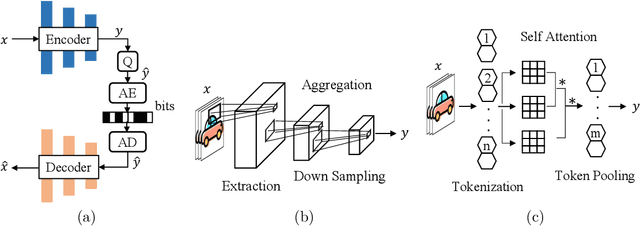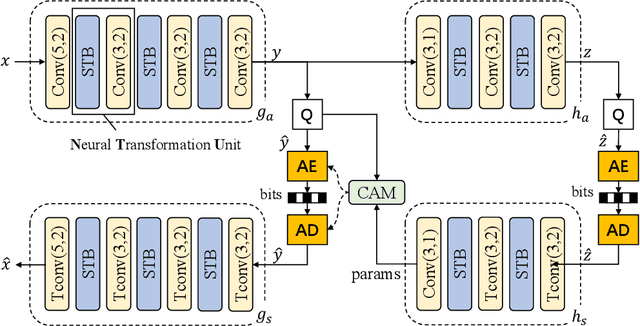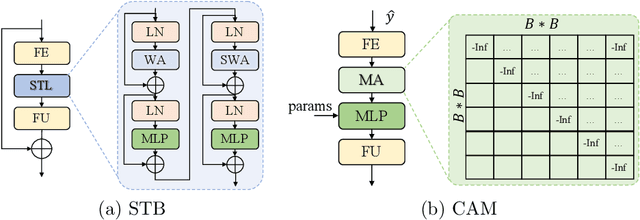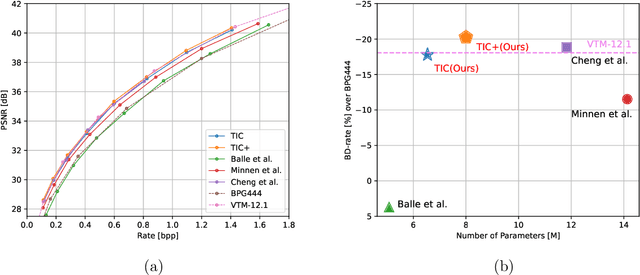Transformer-based Image Compression
Paper and Code
Nov 12, 2021



A Transformer-based Image Compression (TIC) approach is developed which reuses the canonical variational autoencoder (VAE) architecture with paired main and hyper encoder-decoders. Both main and hyper encoders are comprised of a sequence of neural transformation units (NTUs) to analyse and aggregate important information for more compact representation of input image, while the decoders mirror the encoder-side operations to generate pixel-domain image reconstruction from the compressed bitstream. Each NTU is consist of a Swin Transformer Block (STB) and a convolutional layer (Conv) to best embed both long-range and short-range information; In the meantime, a casual attention module (CAM) is devised for adaptive context modeling of latent features to utilize both hyper and autoregressive priors. The TIC rivals with state-of-the-art approaches including deep convolutional neural networks (CNNs) based learnt image coding (LIC) methods and handcrafted rules-based intra profile of recently-approved Versatile Video Coding (VVC) standard, and requires much less model parameters, e.g., up to 45% reduction to leading-performance LIC.
 Add to Chrome
Add to Chrome Add to Firefox
Add to Firefox Add to Edge
Add to Edge